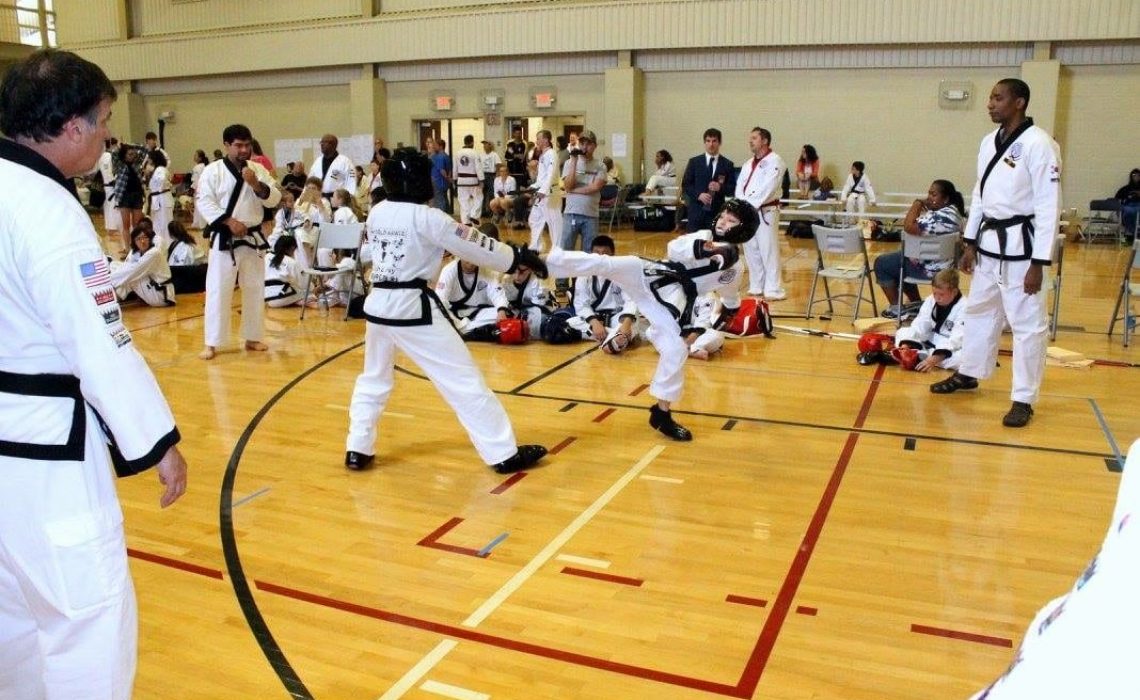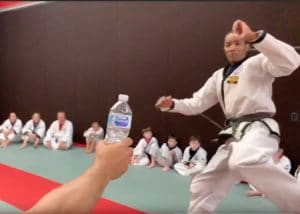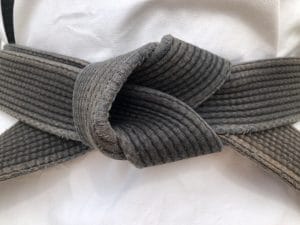Competing can be a very fun and rewarding aspect of being a martial artist. It provides you with the opportunity to work hard towards a goal. It’s a chance to represent your art, school, instructor and yourself. It’s also a great way to make new friends.
Let’s spend the next few minutes talking about ways to prepare so that you have the best possible experience. Competing can be pretty stressful but it’s far less bad if you prepare using a solid approach. Let’s get into it.
Most karate tournaments usually have three categories per division. Competitors are judged on weapon forms, open hand forms, and point sparring.
Terminology
Because I realize that not everyone trains in Tang Soo Do, I’ll share a quick glossary of terms that you can use to convert to the equivalent in your style.
- Gup – Junior student
- Cho Dan – First degree black belt
- Hyung – Form, pattern or kata
- Bassai – Name of our first gup form. Most styles of karate have a variant of this form though some may refer to it as Pal Che.
- Naihanchi Cho Dan – Name of our other first gup form. It’s the first of the three Nanhanchi forms.
- Bong – Staff
- Dan Gum – Short blade / knife
- Jang Gum – Long blade / sword
Which Forms Are You Going to Do?
Depending on rank, a competitor will usually have at least two forms to choose from per category. You can choose to perform the form associated with your current rank or the form required to test for your next rank. Your instructor will be able to tell you which forms you are eligible to perform. This is the first step as you prepare your karate tournament and the probably most important.
The last thing you want is to practice the wrong form for months only to find that you’re not allowed to compete with it. I’ve seen it happen and as you can imagine, it’s not fun for anyone.
What the Judges Are Looking For
The criteria for judging open hand and weapon forms takes a few factors into consideration. The competitors age, rank and form chosen all weigh in. Because most competitors have at least two form options, greater consideration is typically given to more difficult form. It’s important to realize that just because one form senior to another, it doesn’t necessarily mean it’s more difficult. It makes sense when you think about it.
Take the example of 2 competitors. Competitor 1 chooses a form that has no kicks or jumping techniques. Competitor 2 chooses a form that does. If both competitors do an excellent job executing their forms, who do you is going to have the edge? Yep. That’s right – the competitor that chose the form containing more difficult techniques.
It’s important to select a form that highlights your strengths. If you have amazing kicks, choose a form that has kicks over one that doesn’t. If you’re not sure, ask you instructor. They’ll provide you with the best advice.
Open Hand Hyung – A Tale of Two Forms
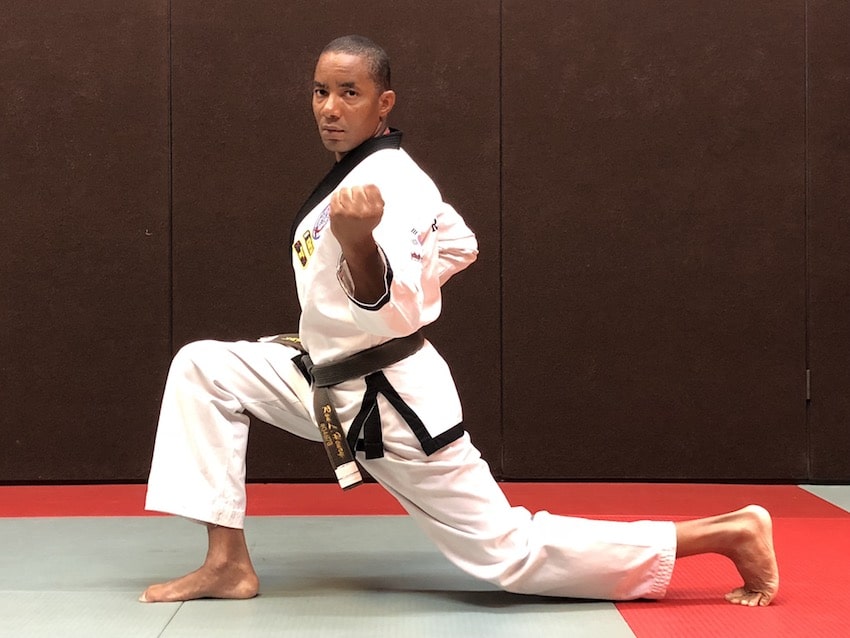
A good example in our style are the forms available to the first gup ranks. As a first gup – two ranks before Cho Dan – you can choose between Bassai and Naihanchi Cho Dan for open hand forms. Naihanchi Cho Dan is the more senior of the two forms but it doesn’t score as well in a tournament.
Here’s why. Nanhanchi Cho Dan only contains 33 moves all of which are performed on a single line. There are also no kicks or jumps in Nanhanchi Cho Dan. Compare that with Bassai which has 52 moves consisting of jumps, spins and kicks.
The lesson is clear.
When given the option, choose the flashier of your available forms. It provides you with more opportunities to showcase your skill. Keep in mind that in all likelihood it’s what your competition is going to do.
Fun fact: I’ve been competing for over 6 years and judging for more than 4. All things being equal, I’ve never seen a case where a competitor doing Nanhanchi has placed better than one doing Bassai. It’s that rare, so go with the form with better odds.
Open Hand Preparation
As you prepare for your karate tournament the best thing you can initially do is have a friend record your form. This will provide a reference that you can use to critique every aspect of how you execute the form. I suggest that you take a divide and conquer approach towards improving your form.
By this I mean that you should pick a single area of the form that needs improvement and repeat it several times until you’ve fixed the problem. Only then should you move onto the next. I’ve found this to be a more effective way of improving vs. repeating the entire form over and over. If you take the repeat the entire form approach, less time is spent on the problem areas which makes it take longer to improve.
When you’re really scrutinizing all aspects (stances, posture, intensity, snap, etc.) it’s not uncommon to spend as long as 15 minutes to get through the entire form one time. That level of diligence is required to really get better. It’s a faster way of forming the muscle memory needed to do your best under pressure.
Weapons
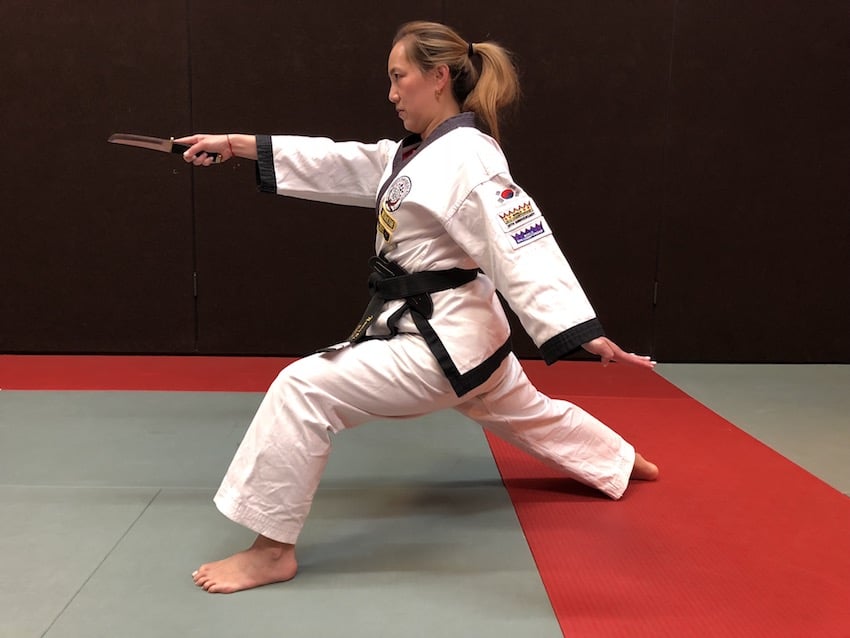
Weapons are my favorite competition category. In Tang Soo Do, the weapons we’re allowed to compete with are Bong (staff), Dan Gum (Short blade / Knife), and Jang Gum (Long blade / sword). Similar to open hand forms, it makes sense to choose the flashier of your available options.
The best advice I can offer for your weapons form is “make it look real”. Strikes with the bong need to look like they would inflict serious damage. Cuts need to be both accurate and fast. You don’t want your cuts or strikes to look like they’re being placed in the proper location. They need to arrive to the correct location with speed and intensity while preserving proper technique.
Like most good martial arts techniques bong strikes and sword/knife cuts should be thrown with your hips generating the power instead of your arms. “Armsy” techniques are less accurate and have less speed and intensity than techniques delivered the correct way.
Point Sparring
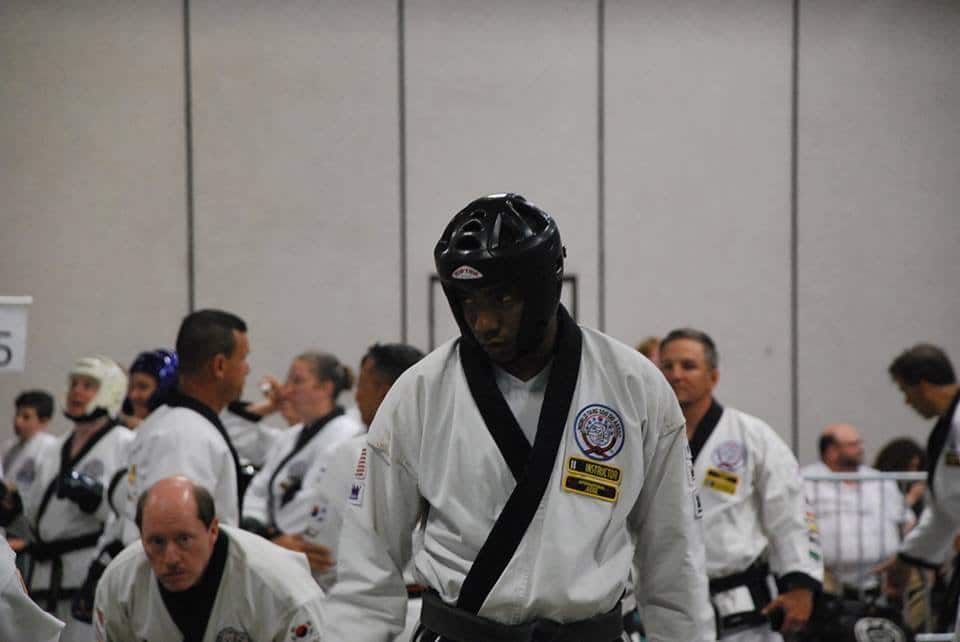
Sparring in our style is not full contact. The goal is to get very close or lightly touch your opponent in the designated scoring areas. In many ways this is more difficult than full contact sparring because it’s more difficult to throw a technique so that it’s fast enough to score while exercising enough control to prevent injury. No one gets hurt and we still get to have fun. It’s a win-win.
In my opinion the most important skill to develop for point sparring is timing. Speed is also important, but only if mixed with great timing. Good timing is a skill you develop from sparring frequently. This is one of those cases where volume really helps. The more you spar, the better you get. When you’re preparing for a karate tournament, it helps to spar people better than you are. In the beginning you’ll lose a lot more than you win. That said, it’s one of the best ways to improve faster.
Cardio
You also need to develop your cardio so that you don’t run out of energy mid match. Most karate tournaments use a bracket system of up to 16 competitors. This means that you may have to win as many as four matches to clinch your division.
This highlights the importance of conditioning. At our tournaments, a sparring match is two minutes long. When you’re preparing you need to build up your cardio so that you can move for three minutes without gassing out. Doing this will provide you with enough reserve for each match.
Outside of actual sparring, the best way to improve your cardio is through interval circuit training. At our school we setup three different exercises that are each performed for one minute. This makes the length of each circuit a total of three minutes. An example interval circuit could look something like this:
- Pushups – 1 minute
- Air Squats – 1 minute
- Jump Rope – 1 minute
Create 4 or 5 different combinations and repeat the entire set 3 times. You should be able to finish in under 45 minutes. Doing this at least once per week along with regular point sparring should get you in top form shape for your karate tournament.
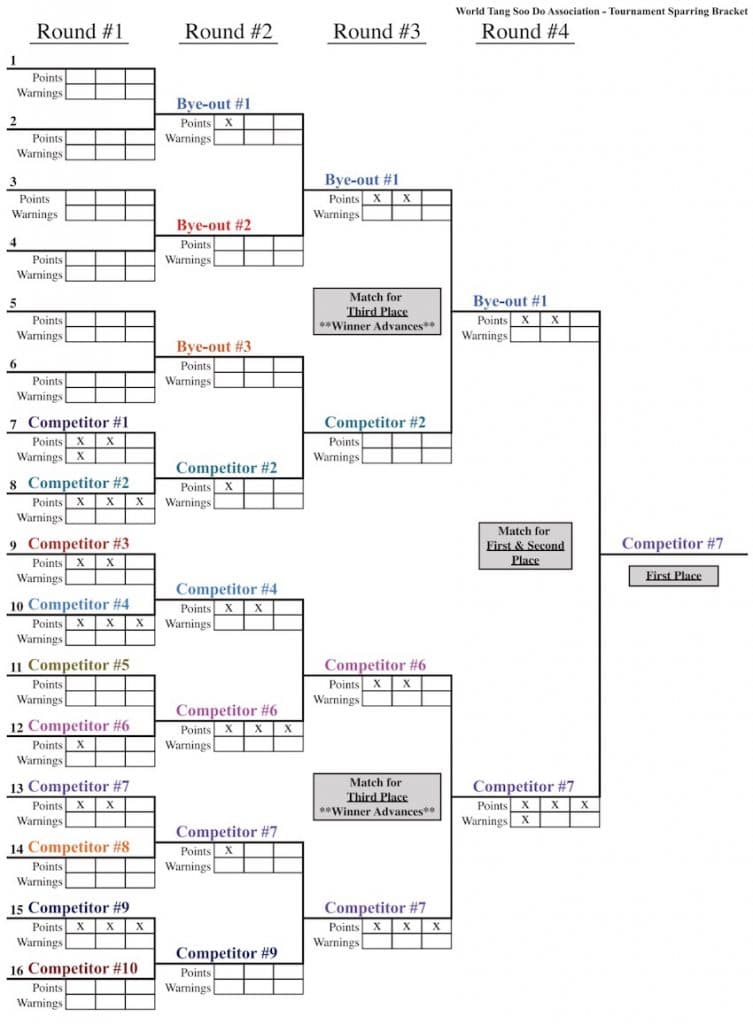
Practice Karate Tournament
Once you’ve done the tournament preparation in all 3 areas, I have a few final pieces of advice for you. First, is to perform your forms in front of a group. Most karate schools run practice tournaments for this purpose. It helps you nail down how you’re going to enter the ring, how you’re going to bow, where your starting position is, and several other factors. Doing this also gets your mind in tournament mode where you have others look at your techniques with a critical eye.
It will provide you with that final opportunity to clean up any aspects of your technique that need improvement. It’s also a great way to get the jitters out. A mistake at your local studio isn’t going to cost you like it will at the actual karate tournament. So be sure to take advantage of this option. If your school doesn’t currently run a practice tournament, perhaps respectfully ask your instructor if it’s something they’d consider doing.
Karate Tournament Floor Surface
If you can, find out what kind of flooring will used at the tournament venue. Doing forms on a padded floor is very different than doing them on concrete or wood. Those surfaces are usually slicker which makes it more likely for you to slip. As the time for the tournament gets closer, it would be wise to find a similar surface to train on. This will allow you to perform your techniques with the same intensity at the tournament as you did during practice.
Closing Thoughts
All that’s left to do at this point is to go have fun. You’ve put in the hard work. Now you get to showcase the best you have to offer. That’s really how you should look at competing. Not as a way to rack up medals and trophies but as a way to grow as a martial artist. It’s all about the journey. Tang Soo!
What are your thoughts? Do you have any other good tournament preparation suggestions? Let me know in the comments below!

